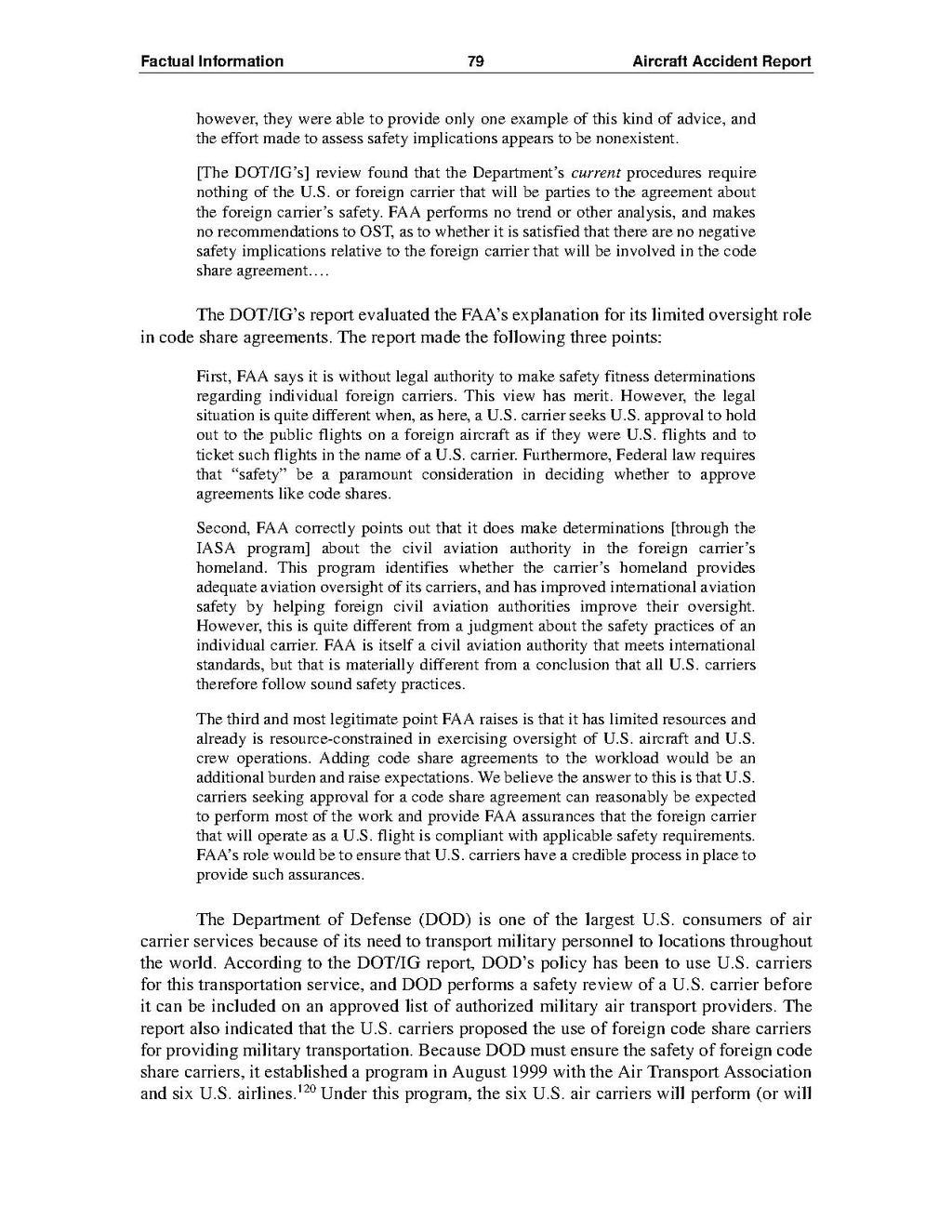however, they were able to provide only one example of this kind of advice, and the effort made to assess safety implications appears to be nonexistent. [The DOT/IG's] review found that the Department's current procedures require nothing of the U.S. or foreign carrier that will be parties to the agreement about the foreign carrier's safety. FAA performs no trend or other analysis, and makes no recommendations to OST, as to whether it is satisfied that there are no negative safety implications relative to the foreign carrier that will be involved in the code share agreement....
The DOT/IG's report evaluated the FAA's explanation for its limited oversight role in code share agreements. The report made the following three points:
First, FAA says it is without legal authority to make safety fitness determinations regarding individual foreign carriers. This view has merit. However, the legal situation is quite different when, as here, a U.S. carrier seeks U.S. approval to hold out to the public flights on a foreign aircraft as if they were U.S. flights and to ticket such flights in the name of a U.S. carrier. Furthermore, Federal law requires that "safety" be a paramount consideration in deciding whether to approve agreements like code shares.
Second, FAA correctly points out that it does make determinations [through the IASA program] about the civil aviation authority in the foreign carrier's homeland. This program identifies whether the carrier's homeland provides adequate aviation oversight of its carriers, and has improved international aviation safety by helping foreign civil aviation authorities improve their oversight. However, this is quite different from a judgment about the safety practices of an individual carrier. FAA is itself a civil aviation authority that meets international standards, but that is materially different from a conclusion that all U.S. carriers therefore follow sound safety practices.
The third and most legitimate point FAA raises is that it has limited resources and already is resource-constrained in exercising oversight of U.S. aircraft and U.S. crew operations. Adding code share agreements to the workload would be an additional burden and raise expectations. We believe the answer to this is that U.S. carriers seeking approval for a code share agreement can reasonably be expected to perform most of the work and provide FAA assurances that the foreign carrier that will operate as a U.S. flight is compliant with applicable safety requirements. FAA's role would be to ensure that U.S. carriers have a credible process in place to provide such assurances.
The Department of Defense (DOD) is one of the largest U.S. consumers of air carrier services because of its need to transport military personnel to locations throughout the world. According to the DOT/IG report, DOD's policy has been to use U.S. carriers for this transportation service, and DOD performs a safety review of a U.S. carrier before it can be included on an approved list of authorized military air transport providers. The report also indicated that the U.S. carriers proposed the use of foreign code share carriers for providing military transportation. Because DOD must ensure the safety of foreign code share carriers, it established a program in August 1999 with the Air Transport Association and six U.S. airlines.[1] Under this program, the six U.S. air carriers will perform (or will
- ↑ According to the DOT/IG report, the six airlines are American, Continental, Delta, Northwest, Trans World, and United.
